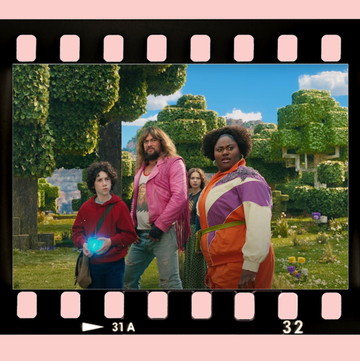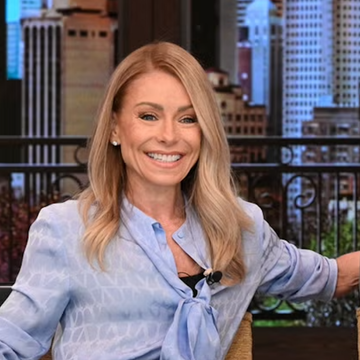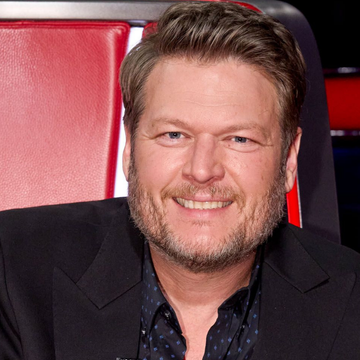11958: The Coasters
 Michael Ochs Archives//Getty Images
Michael Ochs Archives//Getty ImagesThe Coasters began as the Robins, but they changed their name when their burgeoning career began taking them coast to coast. They had a series of hits in the 1950s including their biggest, “Yakety Yak” (1958), which topped both the pop and the R&B charts. Crazy side note: The song was once used at a Senate hearing to show how rock and roll had cheapened American music! The group followed up with other hits such as “Charlie Brown” and “Poison Ivy” (both in 1959), featuring rich vocal harmonies.
21959: The Drifters
 Michael Ochs Archives//Getty Images
Michael Ochs Archives//Getty ImagesThe Drifters were formed in 1953 and saw a number of changes through the years as vocalists left to purse solo careers. In 1959, “There Goes My Baby” soared to the top of the charts with its innovative use of strings and Latin rhythms. “Save the Last Dance for Me” also topped the charts the next year.
Advertisement - Continue Reading Below
31960: The Impressions
 Afro Newspaper/Gado//Getty Images
Afro Newspaper/Gado//Getty ImagesThe Impressions was formed by two friends, Jerry Butler and Curtis Mayfield, who had sung together as teens in the church choir and traveled with a Gospel singers’ group. A performance at Chicago fashion show led to a record label, which eventually led to their hit “He Will Break Your Heart” in 1960, which topped the chart for seven weeks. They enjoyed a succession of hits in the 60s including “It’s Alright,” “Keep on Pushing” and “People Get Ready.”
41961: The Lettermen
 Michael Ochs Archives//Getty Images
Michael Ochs Archives//Getty ImagesFounded in the 1950s, The Lettermen debuted a single in the summer of ’61, which featured a romantic ballad on the B-side: “The Way You Look Tonight.” That song became the real hit with a sentimental sound that was a departure from the rock-n-roll of the era. It headed up the charts to #13, while their next song that year, “When I Fall in Love” made it to #7. Although many different singers came and went through the years, the group maintained its stunning three-part harmonies on more than 75 albums, many of which went gold.
Advertisement - Continue Reading Below
51962: The Four Seasons
 Hulton Archive//Getty Images
Hulton Archive//Getty ImagesThe Four Seasons was one of the best-selling recording artists of the decade. The group had more than 25 hits over a five-year period beginning with 1962s “Sherry.” That was followed by other hits that same year including “Big Girls Don’t Cry,” “Walk Like a Man” (1963), “Dawn” (1964), and “Let’s Hang On” (1965). Their unique doo-wop harmony style, punctuated by Frankie Valli’s falsetto, was instantly memorable. Their story was dramatized by the Tony Award-winning musical, Jersey Boys.
61963: The Beach Boys
 Bettmann//Getty Images
Bettmann//Getty ImagesThe Wilson brothers, who later became the Beach Boys, grew up around music. Their dad was a professional songwriter, and the eldest son, Brian, studied music theory; he taught his younger brothers to sing. The brothers played at school dances and eventually cut a demo called “Surfin” in 1961. Their unique doo-wop sound with a California twist was picked up by a local label and started climbing the chart, ushering in the era of surfer sounds and surfer style. In 1963, their hit “Surfin’ USA” reached #3 with its simple melody and beautiful harmonies. By 1965, five of their albums went gold.
Advertisement - Continue Reading Below
71964: The Beatles
 Hulton Archive//Getty Images
Hulton Archive//Getty ImagesThe Fab Four was one of the first all male groups to attract a screaming fan base of worshipping adolescents — a phenomenon known as Beatlemania! In 1961, Brian Epstein, a local Liverpool record store manager, saw their potential: He pushed them to earn a record contract and began developing their sound. By the summer of 1964, when they appeared in A Hard Day's Night, a movie about Beatlemania, the band already was a cultural icon.
81965: The Righteous Brothers
 Stanley Bielecki/ASP//Getty Images
Stanley Bielecki/ASP//Getty ImagesBobby Hatfield of The Variations and Bill Medley of The Paramours started out as teenaged singers in nightclubs in Orange County, California. They incorporated their groups in the early 60s, and their soulful sound caught on instantly: Legend has it they earned their new name when an audience member yelled out, “That’s righteous, brothers!” Their runaway hit in 1965 was “You’ve Lost That Lovin’ Feeling,” which showcased their amazing range. “Unchained Melody” followed that same year, and the song also became a hit and earned a Grammy nomination 25 years later when it appeared in the movie Ghost in 1990.
Advertisement - Continue Reading Below
91966: The Four Tops
 Michael Ochs Archives//Getty Images
Michael Ochs Archives//Getty Images 101967: Simon and Garfunkel
 Mario Geo//Getty Images
Mario Geo//Getty ImagesSimon and Garfunkel created striking harmonies together, while their hauntingly beautiful lyrics defined the tumultuous '60s. The duo had already enjoyed great success with songs such as "Scarborough Fair"(1966), "Parsley, Sage, Rosemary and Thyme" (1966), and "Sounds of Silence" (1967). But they were introduced to a wider audience when their music was featured in the 1967 film, The Graduate, including songs such as "Mrs. Robinson".
Advertisement - Continue Reading Below
111968: The Monkees
 Bettmann//Getty Images
Bettmann//Getty ImagesDeveloped as an American response to the Beatles, the quartet was chosen from more than 400 auditions to star in the TV series of the same name from 1966 to 1968. Only two in the group originally had musical experience, while the other two had been child stars. Anonymous studio musicians first backed the group, but they eventually pushed to play their own instruments on their third album. Numerous hits included "Last Train to Clarksville" (1966), “I’m a Believer” (1967), "Daydream Believer" (1967) and "I’m Not Your Stepping Stone"(1967).
121969: Tommy James and the Shondells
 GAB Archive//Getty Images
GAB Archive//Getty ImagesWhen a Pittsburgh DJ discovered a two-year-old record by the Shondells and played it at his weekend dances, the song became an instant hit. A record distributor bootlegged it and sold 80,000 copies in ten days. By May 1966, the song "Hanky Panky" was a hit, so a promotor tracked down Tommy James, and a new band was found because the old band couldn’t be put back together. With James’ strong lead and backup harmonies, they enjoyed hits such as “I Think We’re Alone Now.” In 1969, the group released its biggest hits, “Crimson and Clover,” “Do Something to Me” and “Crystal Blue Persuasion.”
Advertisement - Continue Reading Below
131970: The Jackson Five
 Afro Newspaper/Gado//Getty Images
Afro Newspaper/Gado//Getty ImagesLong before Michael Jackson was a worldwide sensation, he and his brothers attained an amazing degree of fame as kids. Raised in Gary, Indiana, the five brothers, ranging in age from 17 to 10, offered a wholesome family group with upbeat pop music—much different from a lot of the folksy songs that were currently in favor. Pushed by their musician father, The Jackson Five first played nightclubs, eventually catching the eye of producer Berry Gordy, Junior. They rocketed to fame in 1970, with their first four singles hitting the top of the charts: "I Want You Back", "ABC", "The Love You Save" and "I’ll Be There". Over the next two years, seven more singles would hit the top 25.
141971: The Bee Gees
 Steve Schapiro//Getty Images
Steve Schapiro//Getty ImagesOriginally from England, the Gibb family immigrated to Australia, where the three boys, Barry, Robin and Maurice, had moderate success with their music on Australian TV shows. The family moved back to England in 1967 to help further their careers but the brothers split briefly after the failure of their 1969 album. They reunited to release their first #1 hit, “"How Can You Mend a Broken Heart"” in 1971, which also earned a Grammy nomination. This was followed by other hits including “Lonely Days.” Their fame temporarily slowed, but they experienced a resurgence in the mid-70s. With exquisite three-part harmonies, the group has had more #1 singles than any band but the Beatles.
Advertisement - Continue Reading Below
151972: The O'Jays
 NBC//Getty Images
NBC//Getty ImagesFirst called The Mascots, then The Triumphs, The O’Jays were a group of young men who started out as Gospel singers. They formed a group in 1957, while they were still in high school, eventually adopting their new name in 1963 from a Cleveland DJ Eddie O’Jay, who loved their sound and helped the group get an agent (who then got them a label!). They toured extensively until hitting it big with “Back Stabbers” in 1972. The song highlighted their outstanding harmonies and was followed by many other hits including "Love Train", which some experts call the first disco song, and “I Love Music.”
161972: The Osmonds
 NBC//Getty Images
NBC//Getty ImagesFirst a barbershop quartet of the eldest brothers, the Osmonds eventually were joined by younger brothers, Donny and Jimmy. The group had a squeaky-clean image and an appealing bubble-gum sound. Their first #1 single was “One Bad Apple” in 1970, followed by a series of hits including "Go Away Little Girl"(1971), "Yo-Yo"(1972) and "Puppy Love"(1972). Donny and his sister, Marie, eventually emerged as teen idols with their own TV show from 1976 to 1979.
Advertisement - Continue Reading Below
171973: The Isley Brothers
 Michael Ochs Archives//Getty Images
Michael Ochs Archives//Getty ImagesFounded in 1959, the Isley brothers grew up in the church choir and formed a harmony quartet coached by their dad. “Shout” was their first success in 1959, followed by a few other hits including "It’s Your Thing" (1969). The group added the two younger brothers and rewrote “That Lady” (originally released in 1964) in 1973, when it charted #21 for the year. The brothers went on to release multiple million-selling albums throughout the '70s.
181974: The Righteous Brothers
 CBS Photo Archive//Getty Images
CBS Photo Archive//Getty ImagesAlready a success in the '60s, the Righteous Brothers made a comeback in the '70s with their third-highest charting hit, “Rock and Roll Heaven” in 1974. It became their first Top Twenty single since 1966. They followed up with two more hits, "Give It to the People" and "Dream On."
Advertisement - Continue Reading Below
191975: The Bee Gees
 Steve Schapiro//Getty Images
Steve Schapiro//Getty Images“Jive Talkin’” revived the Bee Gees’ career, shooting to #1 on the charts and staying there for 11 weeks. Their funky new R&B sound was also highlighted in “Nights on Broadway.” It began a period when almost everything they touched turned to gold.
201976: The Bee Gees
 Steve Schapiro//Getty Images
Steve Schapiro//Getty Images 
Arricca Elin SanSone is a writer, editor, and content creator who specializes in lifestyle and gardening. With a background in health reporting, she applies these same research skills when writing about the science of growing things. She trials new plants in her expansive garden, and her houseplant collection consists of 60+ varieties. Arricca has written thousands of articles for publications such as Country Living, House Beautiful, Good Housekeeping, Prevention, VERANDA, Southern Living, and more. She’s happiest when digging in the dirt, baking, or spending time with the people and dogs she loves.
Advertisement - Continue Reading Below
Advertisement - Continue Reading Below
Advertisement - Continue Reading Below

































